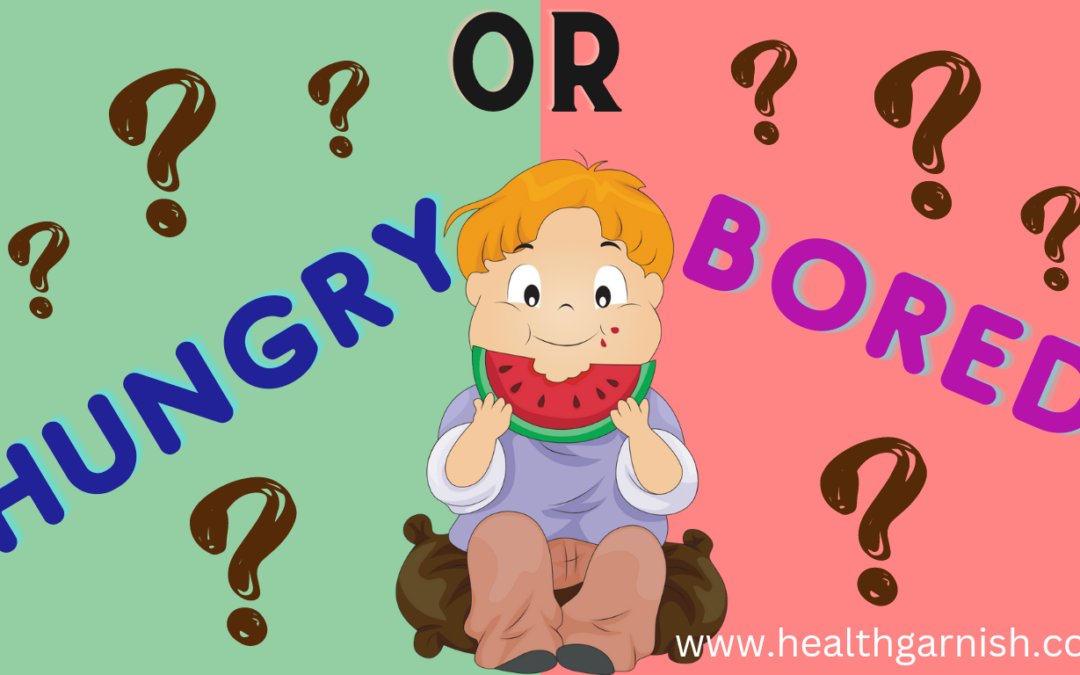
HUNGRY OR BORED?
It’s not uncommon for kids (and grown-ups) to use food for purposes other than filling their stomachs. Kids’ emotional states are often reflected in what they consume.
The following are some suggestions to help you figure out why your child may be constantly hungry.
Where Does the Urge to Eat Come From?
If your child is eating three healthy meals and one healthy snack every day but still claims to be hungry, there may be other factors at play.
Solutions You Can Implement
Put these concerns to the test:
Food and Emotions are they related?
Is your kid prone to snacking while they’re feeling any of these emotions?
Boredom
Depression
Stress
Frustration
Insecurity
Loneliness
Fatigue
Resentment
Anger
Happiness
Does your kid ever eat when they’re not supposed to? Do you find that your kid eats whenever he or she gets the chance?
If your child scores well on a test, do you take them out for ice cream to celebrate? Your child’s weight may increase unintentionally because of this.
Do you compliment your kid when they’re acting appropriately? A child’s confidence might grow when they hear words of praise. As an added bonus, they can keep a child encouraged to keep making the healthy food and exercise choices that will lead to the best results.
Just how are you interacting with your kid? Is it mostly pessimistic? If so, how frequently does it prove crucial? Adapting to such a setting is challenging for anyone, especially young people.
Other, Healthier Options
Your child may be eating because he or she is bored, so you may need to find other ways to occupy his or her time.
Solutions You Can Implement
Be sure your kid is getting at least three healthy meals and one healthy snack every day. Having this on hand will keep you from getting hungry in between meals.
Assist your child in finding other activities, including eating, that he or she would rather do.
Walk to the park
Grocercy shopping
Actively engaging in a games
Roller skating or in-line skating
Puzzle Solving
Putting in a new flower garden
Soaring through the air on a kite
I’m going to the mall with you (without stopping at the ice cream shop)
Serve raw veggies and fruits, light microwave popcorn, vegetable soup, sugar-free gelatin, and fruit snacks as healthy snack options. Your child won’t feel full from the empty calories in snacks like chips and candy bars.
It’s up to you to decide what to eat for a snack. When kids get to choose their own snacks, they usually choose for the unhealthy options. Educate your kid on the value of nutritious snacks by talking to them about it. Get together and make a list of mutually acceptable snacks.
Remember
The way you parent your child around food and weight may be affected by your own history with these issues from childhood. Determining whether or not your child is eating for the appropriate reasons is one of your primary challenges.
